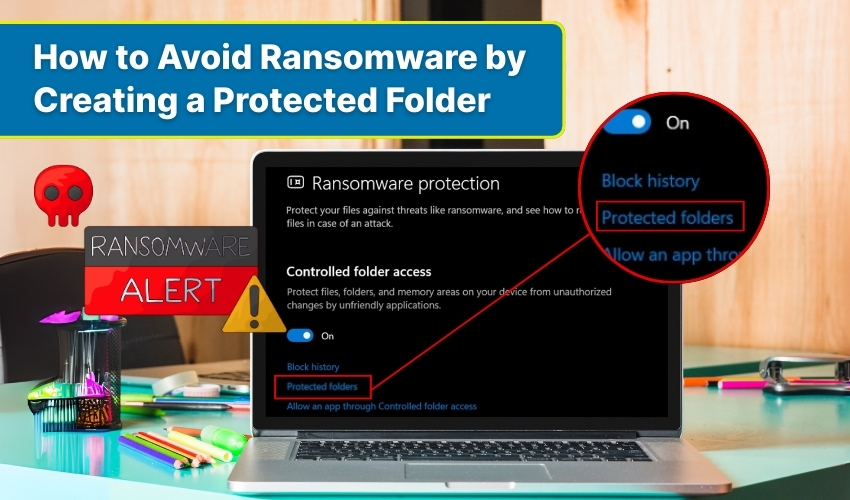How to avoid ransomware by creating a protected folder

How to Avoid Ransomware by Creating a Protected Folder
Ransomware has become one of the most dangerous threats on the internet today. Attackers use it to block access to your data until you pay them money. People who keep important documents, pictures, or work files on their devices often do not realize the risk until it is too late. The smartest way to fight this problem is to build strong ransomware protection. A simple yet powerful step is to create a protected folder that keeps your most secure files safe from harm.
Why ransomware protection matters
When ransomware attacks, it locks your data or even your whole system. Victims often face pressure because their work, memories, or financial records remain frozen. Paying the ransom does not always bring back the data. In some cases, criminals disappear after payment. That is why ransomware protection is more important than dealing with recovery later. The focus should be on prevention, not on trusting criminals to unlock your files.
What is a protected folder?
A protected folder is a safe space on your computer or device where only trusted programs or people can open or change files. This space shields your information against unwanted changes. When ransomware tries to take over, it cannot reach inside the folder. By placing your most secure files here, you build a wall that blocks most attacks.
Steps to create a protected folder
The process to create a protected folder depends on your system, but the idea remains the same.
- Choose your folder – Pick a location where you want to store your secure files. Make sure this folder does not sit in a place shared by many apps or users.
- Enable folder protection – In Windows, you can use “Controlled Folder Access” found in security settings. This tool is built for ransomware protection and allows you to lock folders against unknown programs.
- Set permissions – Limit who can read, write, or edit the folder. Only trusted accounts should have full access.
- Add your secure files – Move your most important data into the protected area. Documents, project files, and personal memories should stay here.
- Update settings often – Cyber threats evolve. Regularly check the folder and security settings to make sure the wall stays strong.
Benefits of using a protected folder
Creating a protected folder provides several advantages:
- Defense against ransomware – Even if malware enters your device, it cannot change files inside the folder. This makes it a strong line of ransomware protection.
- Peace of mind – Knowing your secure files sit in a shielded space lowers stress during online work.
- Ease of recovery – If your system faces an attack, restoring data becomes much simpler because your main files remain safe.
Additional practices for ransomware protection
While a protected folder is a vital step, it should not stand alone. Combine it with other practices for the best defense.
- Regular backups – Keep copies of your secure files on an external drive or cloud service.
- Software updates – Attackers look for weak points. Updating apps and systems closes those gaps.
- Email caution – Many ransomware infections start with a fake email. Avoid clicking unknown links or downloading strange attachments.
- Antivirus tools – Use security software that focuses on ransomware protection.
The role of secure files in daily life
Your secure files may include more than just work data. Family photos, personal notes, and financial records deserve the same level of safety. By placing them in a protected folder, you make sure they remain out of reach for criminals. The sense of security allows you to use your computer without constant worry.
Final thoughts
Ransomware will remain a serious digital threat for years to come. Instead of reacting after damage, people should prepare with simple habits. One of the strongest yet easiest methods is to create a protected folder.
This space guards your most secure files and adds a strong layer of ransomware protection. Combined with backups, updates, and careful habits, it keeps you one step ahead of attackers. Prevention always costs less than recovery, and safety of your files begins with protection you control.
